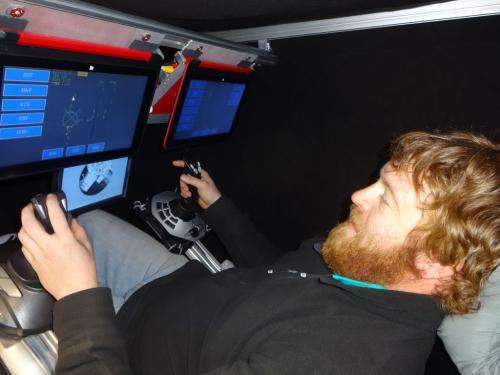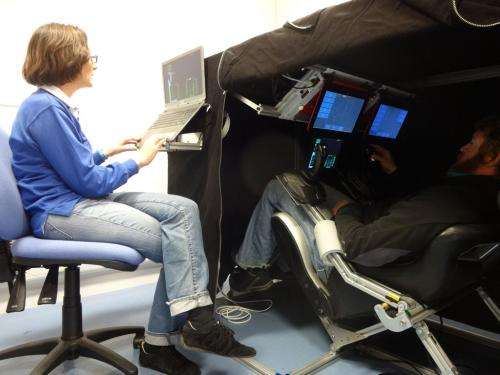Halley research station hosts research to understand human adaptation to space flight

A medical doctor, based at the most southerly UK research station in Antarctica, is about to embark on a new campaign of life science experiments to study how people adapt to life in remote and isolated locations in preparation for prolonged space flight. One of these experiments, set up in collaboration with the European Space Agency (ESA ), involves staff at British Antarctic Survey's (BAS) Halley Research Station being tested using a specially designed spaceflight simulator over the austral winter.
The experiment aims to investigate how well previously trained skills are maintained over the nine months period of the winter, being completely isolated and in the dark for four months. Crew members are currently being trained in the simulator (similar to the one used for astronaut training in the European Astronaut Centre in Cologne, Germany) to perform a docking of the Soyuz spacecraft to the International Space Station. Halley Research Station is home to between 13-52 scientists and support staff (depending on the time of year) and is located over 10,000 miles away from the UK. It is about to embark on winter and will experience temperatures as low as −50 degrees Celsius and more than four months of darkness.
Professor David Vaughan, Director of Science at BAS says, "We are delighted to have agreed this partnership with ESA to use Halley Research Station in Antarctica as a platform for research on human space flight. By working with ESA, we will play a part in ensuring future astronauts can operate safely on future missions."

The Halley crew will live in the same conditions as the teams being studied at Concordia—a joint French/Italian station, located on the other side of the continent—except they will be at sea level. Their colleagues at Dome Concordia live at 3200 m above sea level, which, in terms of lack of oxygen, corresponds to an altitude of approximately 3800 m at the equator.
Halley Research Station doctor Nathalie Pattyn says, "This experiment will be running at both Concordia and Halley stations to look at the factors affecting astronauts as they embark on long periods in space. Living at Halley is in many ways similar to living in space where crew are cut off from the world without sunlight and in very small communities. The huge scientific bonus of comparing data from Halley and Concordia is to be able to look at the influence of hypoxia, the lack of oxygen, on top of the isolation and confinement issues."
"We are also running other experiments making use of the austral summer, with its constant illumination; and the austral winter, with its constant darkness. This provides a unique natural laboratory to challenge the body's reaction to light. One of these studies aims to test how the team's eyes adapt to the prolonged period of darkness. Another one investigates how physical activity and the body clock regulation may alter sleep patterns."
One of the other projects running over the next nine months will involve the team members recording themselves in a video diary. This will be analysed via an computer algorithm through parameters such as pitch or word choice, that will provide a new window to objective monitoring of psychological status, and thus adaptations to the stresses of prolonged space flight.
Jennifer Ngo-Anh from ESA said, "Offering Halley Research Station as an additional platform for European researchers will provide us with important data, experience and knowledge to prepare for future long-duration human missions to the Moon, Mars and beyond."
Provided by British Antarctic Survey





















